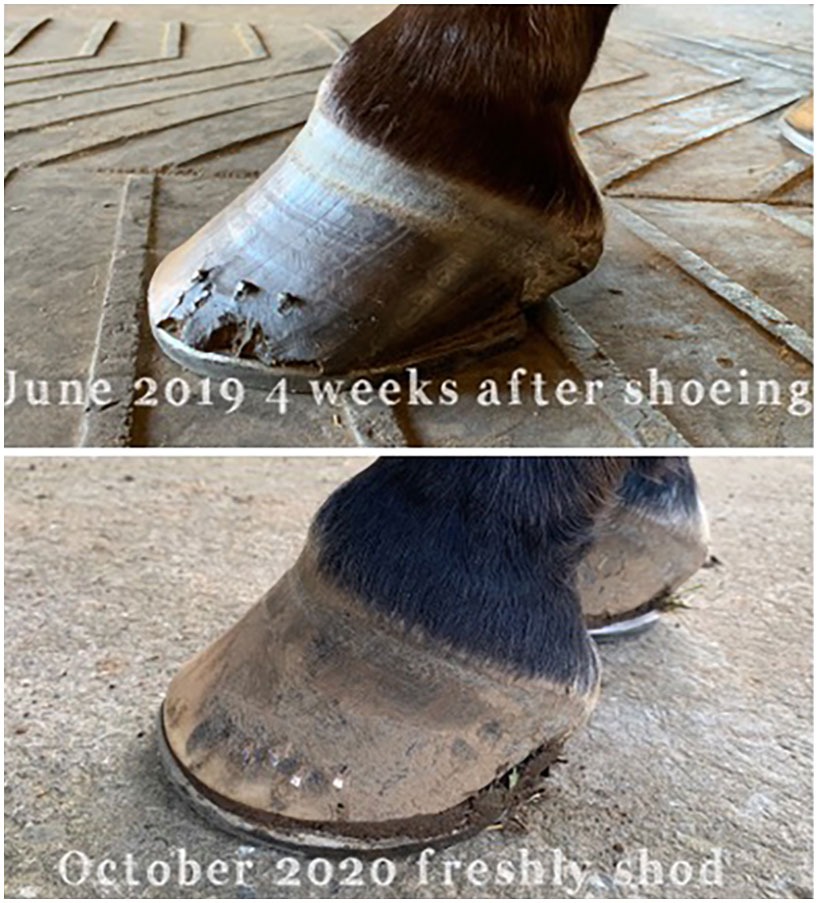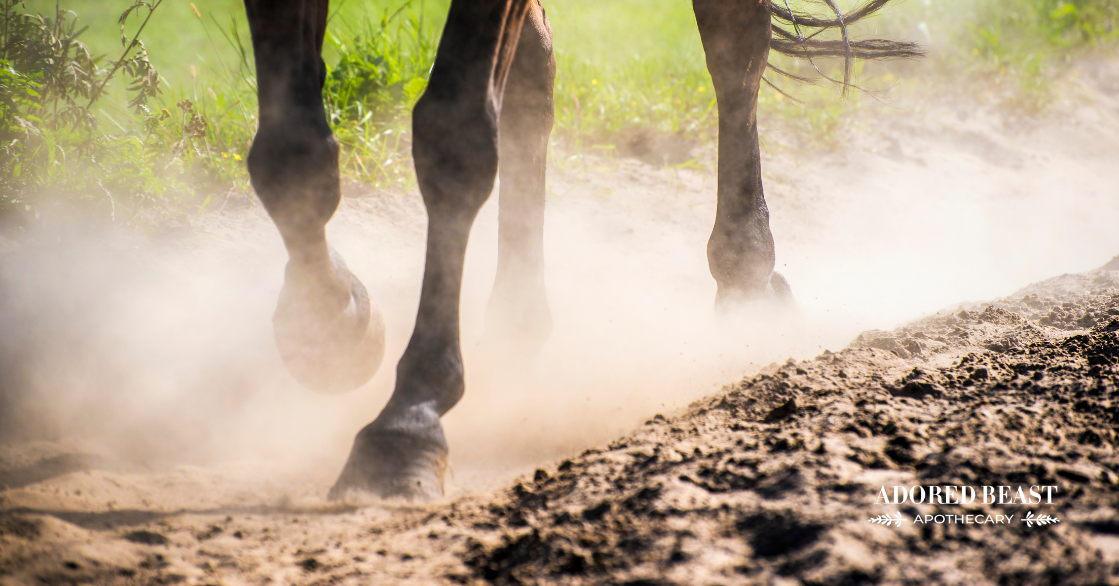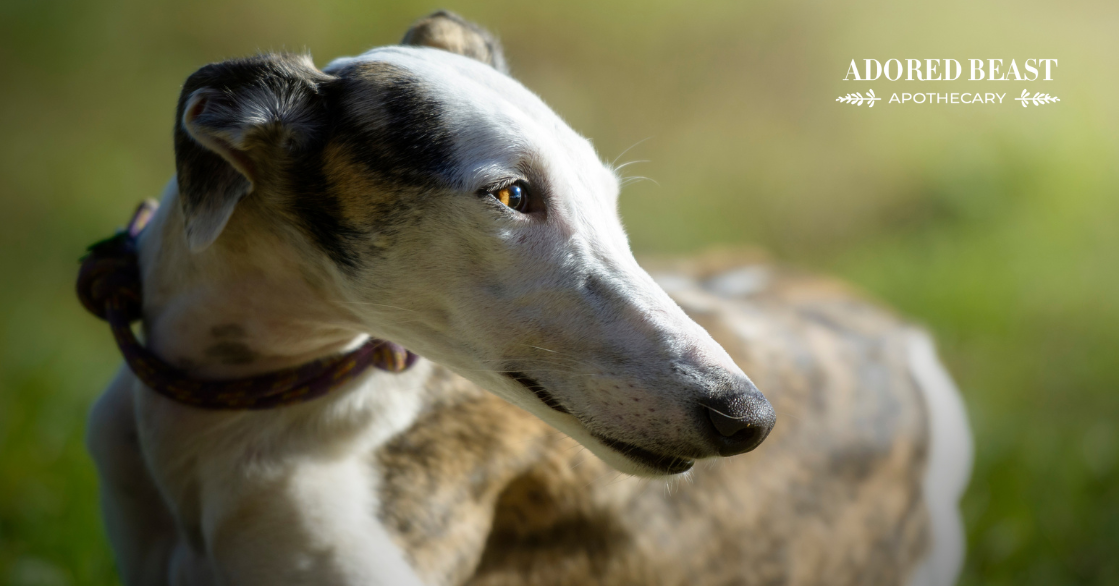Everyone knows the saying “no hoof, no horse”. And it’s one million percent true! Horse hoof care is a whole world unto itself. Every horse owner has a trimmer and/or a farrier who takes care of your horse and it’s paramount for making sure they are comfortable and happy.
But even with the perfect farrier, hoof care takes work, and you need to be able to address various issues and help manage them as soon as they appear.
This week, we’re talking about the various ailments that can affect the hoof, and how you can help your horse!
What is a Hoof?
Your horse’s hoof is more than just a foot. It is made of dynamic and flexible tissue, largely keratin – a highly durable protein that can withstand the wear and tear of everyday life for such large animals. Hooves are also shock absorbers and protect the leg bones and joints and contribute to blood circulation throughout the entire body.
Unfortunately, these critical parts of your horse’s body are also prone to illness. In fact, a study done in 2021 in the Netherlands showed that 85% of horses had some kind of hoof disorder. These disorders can include:
- thrush infections
- cracks in the hoof wall
- growth rings
- bruising and chronic assesses
- navicular disease
- white line disease
- laminitis
And various environmental, lifestyle, and health factors can impact that risk. Those factors include:
- trimming and shoeing
- environment (hot/cold wet/dry)
- footing (work and living quarters)
- nutritional status
- metabolic health
- exercise load or lack of exercise
- gut health
So what causes hoof disease to begin with? And, if your animal presents with a hoof disorder, what steps can you take to help heal it?
Causes of Hoof Disease
As mentioned, these are some of the most common hoof diseases our horses face.
- Thrush – caused by anaerobic bacterial infection. Thrush bacteria love low oxygen environments like wet/soft feet and feet that have poor circulation from standing too much. Symptoms include smelly, sensitive feet, foul odour, lameness, discharge or bleeding.
- Cracked Hooves – this can include lateral, vertical, heel, quarter, and toe cracks. These cracks affect the integrity of the hoof and chronic cracks = a chronic underlying problem (eg. nutritional imbalance, gut issue, trim/shoeing issue). Hoof defects/conformation can be a cause.
- Growth Rings – a lot of people believe growth rings develop because of a laminitis episode but that’s not always the case. They can be from laminitis but sometimes are related to the stress associated with circadian rhythm changes (and other types of stress which can increase inflammation in the entire body), haircoat shedding, and changes in foot density.
- Bruising and Chronic Abscess – this is characterized by red and purple discolouration of the hoof, pus-filled pockets that eventually blow out either around the coronet band or the sole of the hoof, holes in the foot that appear as the horse’s feet are trimmed out, severe lameness, and pain. These can be caused by a variety of things, including soft feet, wet conditions, injury, poor trimming or shoeing, conformation, workload, footing, or a nutrient imbalance.
- Navicular Disease – this is caused by navicular inflammation and degradation of the navicular bone in the foot and the surrounding tissues, often appearing in older horses, obese horses, and it often has an auto-immune component. It can also be caused by an injury, conformation/congenitally related, a circulatory issue, or an inflammatory diet.
- White Line Disease – this is the separation between adjacent layers of the hoof wall causing pain and discomfort. The cause is not entirely known but most likely conformation, environments and vascular damage, secondary infections/fungal or trauma to the hoof, or a nutritional issue are at play in its development.
- Laminitis – this is inflammation of the laminae and damage of the hoof tissue and the coffin bone. Metabolic disease is often involved in this process, as are nutrition and stress. It is extremely painful, and in extreme cases, euthanasia can be necessary
Horse Hoof Care: Factors to Consider
There are many things you can do to be proactive and to ensure that your horse’s hooves are healthy and cared for, now and in the future.
1. Trimming & Shoeing
- I always recommend getting a set of balance x-rays done by your veterinarian so that your farrier knows exactly what the angles of your horse’s feet are and any corrections can be made as needed. X-rays can be done every few years to ensure that they are staying balanced.
- Ensure regular trimmings by booking your farrier visits in advance and get on a regularly trimming cycle.
2. Environment
Several things can positively impact hoof health from an environmental perspective:
- correct any overly-wet footing (thrush, fungus, bacteria)
- nourish your horse’s feet with oil during dry conditions to prevent cracking/brittleness
- assess the footing your horse is living on and working on. It’s important for horses to move across a range of different types of footing so that the feet flex in different ways and promote circulation (eg. hard/soft/uneven/flat, etc)
- space and movement increase flexion and circulation, leading to increased oxygen (anaerobic bacteria hate oxygen!)
- diet is part of the environment when done correctly! Seasonal plant rotations can give your horse’s body feedback and support for what’s going on in the outside world
3. Exercise
- lack of movement/circulation will not promote hoof health – make sure your horse is moving frequently and exercising regularly
- avoid excessive heavy exercise on hard surfaces
- if your horse wears shoes, ensure they are being shod for the exercise that they are doing
- are they getting what they need for sport?
4. Nutritional Status
Pay attention to any and all of the following:
- vitamin, mineral, or protein deficiencies
- metabolic health
- gut health – disease can cause deficiency of B vitamins and short chain fatty acids and inhibit absorption of all nutrients coming in from food
- horses are very starch sensitive – high starch diets can lead to ulcers, insulin resistance and systemic inflammation
5. Gut Health
An inflamed gut = inflamed tissues and systemic inflammation (leaky gut/ulcers). Be wary of any of the following and how they impact the gut:
- systemic disease
- NSAID drugs
- overuse of antibiotics
- processed feed
- no live dirt – sterile or promoting anaerobic bacteria – standing in it and eating off of it = microbial imbalance of the gut and hoof
Hoof Care Tips & Solutions
These are things you should be doing on a regular/semi-regular basis to help ensure proper horse hoof care.
1. Diet
Proper diet is essential for horse hoof care. The link between the two is undeniable, and so very important.
My recommendations for diet include:
- get some mineral and vitamin blood testing done (mineral profile plus Vit A, B, E). Common deficiencies include calcium, B vitamins esp. biotin (B7), selenium and vitamin E – all very important for healthy feet!
- conduct a diet analysis with a professional – protein/amino acid imbalances are also common. You can often see this in the horse’s body condition and hoof condition – poor topline and “pancake feet”
- eliminate extruded feed
- eliminate starch
- eliminate glyphosate – glyphosate (video and study) is a herbicide and patented antibiotic and endocrine disruptor, It has been scientifically proven to affect the keratin of the hooves of horses. It reaches all body tissues and crosses the blood/brain barrier. Wheat, soy, flax, corn, alfalfa. Beware – big AG crops are genetically modified to handle large amounts of glyphosate and other harmful herbicides (eg. dicamba which is not listed as an ingredient!).
- focus on forage and fibre rather than extruded feed which is inflammatory
Nutrients for Hoof Health:
- Calcium (Ca:P Ratio) – if calcium is too low, it will affect the hoof and the entire musculosketal and nervous systems! This can lead to chronic feet issues, chronic sport injuries, or neurological issues.
- Vitamin Bs – All of them! B7 – biotin can help but you need to include all B vitamins and if you test and the Bs are low on bloods, gut disease is likely. Make sure you are using a full spectrum B vitamin plus increasing biotin for soft hooves.
- B vitamin deficiency is also indicative of gut disease so this must be addressed – most of a horse’s B vitamins are synthesized by the gut microbiome.
- Microminerals: Fe:Zn:Cu ration (high iron in water) and selenium (esp. cracked feet)
- Fibre – forage, herbs, leaves, bark, as many different sources = prebiotics = gut diversity and health! The quality and diversity of the prebiotics will greatly determine the beneficial postbiotics you horse can produce for immune and hoof health
- Omega 3s – Plant based/anti-inflammatory/hormone balance) – flax, chia, marine algae – the plants also add amino acids and prebiotics to the diet
- No fish oil – heavy metals/rancidity/species-inappropriate/not environmentally friendly
2. Talk to Your Farrier
The relationship you (and your animal) have with your farrier is critical. You absolutely have to trust them, and feel comfortable voicing concerns. It’s extremely important to ensure that you have a farrier that understand your horse’s needs.
- ask questions
- pre-book your visits
- point out anything that doesn’t look or feel right (eg. pain/abnormalities)
For more on finding the right farrier, check this out.
3. Topical Treatments
- eliminate caustic/toxic turpentine and formaldehyde unless there in serious infection or disease going on
- toxic ingredients will be absorbed into the bloodstream
- use high quality oils – grapeseed, apricot seed, MCT oil
- oils for hot/dry conditions (not wet) – don’t soften the feet with oil during wet season
- balms with biodegradable waterproofing agent such as lanolin and beeswax offer protection from wet ground/bacteria and soft feet
My hoof product recommendations: oil and balm.
4. Gut Health
When we look at common horse disorders, gut disease and metabolic disease are right up there. This makes paying attention to gut health so critical.
My recommendations for gut health for horse hoof care include:
- probiotics – a wide variety, as many beneficial strains as possible
- include species-specific probiotics too
- dirt/grazing – increase healthy microbe intake
- wide range of low-starch fibres via forage and herbs (prebiotics) to promote healthy gut bugs
- stress assessment (cortisol can contribute to ulcers) – with trainer/horse behaviour specialist
Gut Supportive Nutraceuticals:
- Omega 3s – flax, chia, marine algae, camelina
- Probiotics – diverse strains, good quality prebiotics so they work, species-specific microbes
- N- Acetyl Glucosamine – plant derived – support interstitial linings
- L-Glutamine – repair of the gut lining
Here’s one of my hoof nutrition success stories. This is Roman, before and after we worked hard to het his hoof health back on track! The pictures speak for themselves!

Disease Specific Recommendations
While the above recommendations are important for overall horse hoof care, these few are specific to the different conditions.
Thrush – diet is number one here because horses that are insulin resistant at risk for laminitis. It’s extremely important to work on reducing dietary starch and harmful chemicals along with increasing the fibre variety of your horses’ diet. Make sure you’re picking your feet out every day if the ground is wet. If there is an infection that your farrier is trimming the dead tissue off regularly. It might be necessary to remove shoes to increase flexion of the hoof/ increase oxygenation. Topically, aromatherapy can be used in some cases but consult your farrier and veterinarian if your horse has a serious infection. Clay poulticing and foot soaking can be effective for active abscess but if the problem is chronic, there’s something deeper that needs attention! Be sure to use the checklist above to create a plan for how to address these issues in your horse.
Navicular Disease – reducing inflammation in this scenario is KEY. Please check out all the solutions above to learn how to reduce inflammation in your horse’s body.
White Line Disease – it’s important to work with your farrier on this one to ensure that everything is being done in the trimming and balancing department to avoid worsening the problem and allowing it to heal. Working with a nutritionist is also a good idea to ensure there are no huge deficiencies in your horse’s diet.
There’s a whole lot involved in horse hoof care and supporting healthy hooves. With all changes that you make, do them slowly as not to overwhelm your horse with too many changes at once. If you’re not sure where to start, do get help from a professional!












